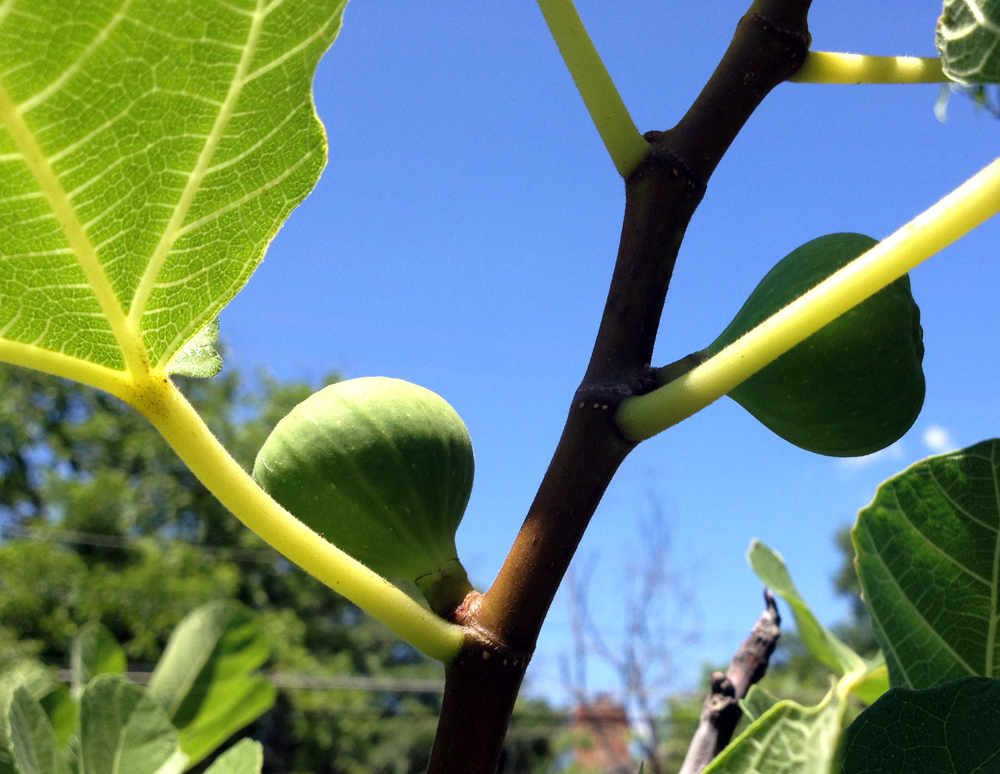When we lived in Little Forest Hills, my husband and I had two-mile route we walked regularly through the neighborhood. Around the corner from our house was a lovely mature fig tree. One day, during one of our walks, he commented on the tree and asked what it was. “Well honey, that’s a fig tree” I replied. “You mean, like Fig Newtons??” he asked in all seriousness. “Yes dear, that’s a Fig Newton tree.” I laughed, he laughed, and to this day every fig tree he sees is a “Fig Newton tree”. This story reminds me that not everyone is that well acquainted with figs or how to grow them.
Fig plants need a full sun exposure to produce fruit. Full sun means a minimum of 6-hours of direct sunlight, but more is better. Make sure to find an open site with sun most of the day. If possible, plant figs on a southern exposure where the early developing fruit will be more protected from winter cold.
- Mature trees are cold hardy to about 15 or 20 F. However, we often drop below 15 F in Dallas during winter months, which can kill all of the top-growth on your fig plants. Most often they’ll grow back from the root zone, but it does set you back in terms of fruit production.
- Depending on the variety, they can quickly reach 15 – to 30-feet tall.
- While figs tolerate many different soil types, good drainage is key. Don’t plant them in low spots in the garden where excess moisture accumulates.
- Note that in times of heavy rainfall, plants may experience a growth spurt and push off developing fruit. So if you’ve lost many fruits at one time, it’s most likely due to excess watering or rainfall in a short period of time.
Some of the best common fig varieties for Dallas are ‘Celeste’, which is very cold hardy, ‘Brown Turkey’, ‘Alma’, ‘Magnolia’ and ‘Kadota’. We have four Fig Newton trees in our current garden, including ‘Brown Turkey’, ‘Celeste’ and ‘Italian Black’.
Fig Fact: Common figs are unique in that they do not require pollinators for the fruit to develop. What you’re actually consuming when you eat a fig is modified stem tissue, rather than mature ovary tissue. In common figs, both the male and female flower parts are inside the stem tissue. What you find in the fruit that look like “seeds” are actually just unfertilized ovaries that did not make fruit.







